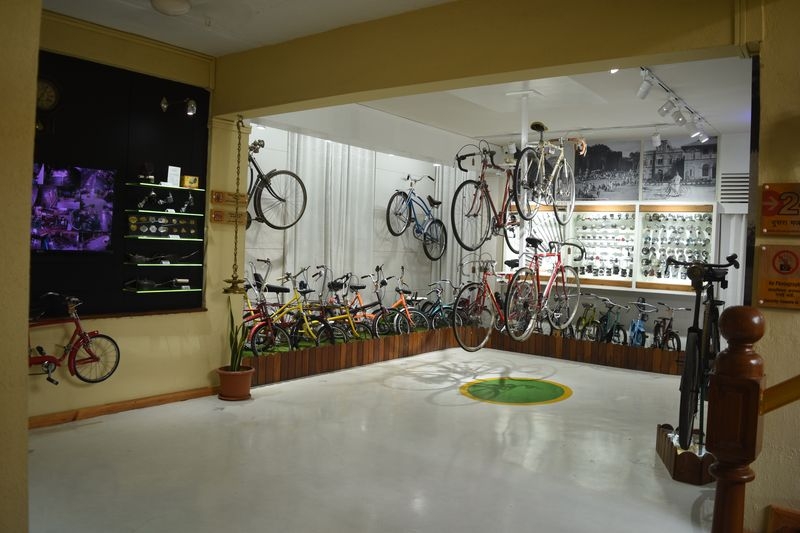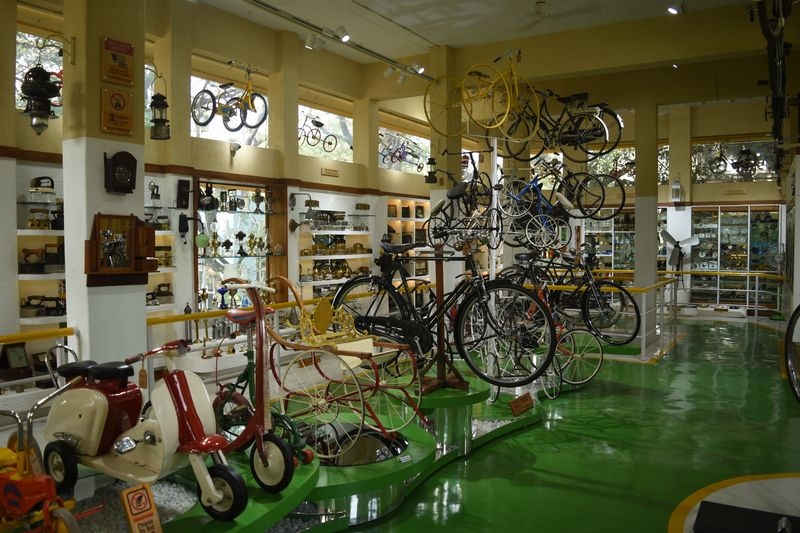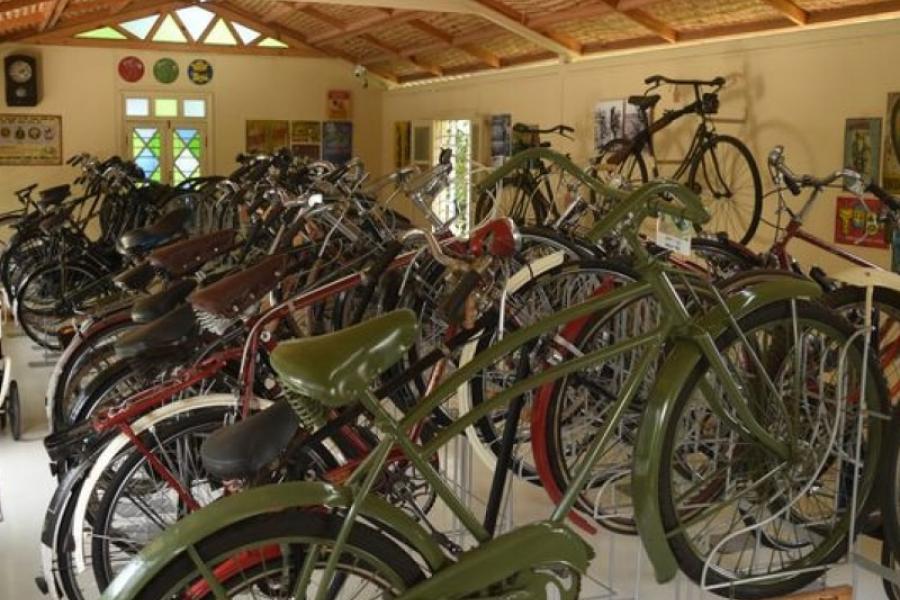Pune’s Cycles Museum
Ride into the Past on Two Wheels
With over 150 vintage cycles, the Vikram Pendse Cycles Museum gives an opportunity to take quite a ride through history. From a foldable Airborne Paratrooper Bicycles used in World War II to the unique self-oiling 1914 Golden Sunbeam, Sahapedia puts the spotlight on this Pune, Maharashtra, museum that has much to offer.
Not many would place bicycles as the preferred mode of transport in a war zone, but during the Second World War, over 60,000 Airborne Paratrooper Bicycles were made just for war use. Manufactured by Birmingham Small Arms (BSA), a popular bicycle brand today, these bicycles were used extensively by British and Indian paratroopers. These special cycles could be folded into half and carried in a backpack as the soldiers were air dropped in a war zone, and were ideal modes of stealth transport.
That was until 1944, when they were overtaken by military jeeps. Fifty-two years later, in 1995–96, a single 1940 BSA Airborne Paratrooper bike made its way to Vikram Pendse in Pune, Maharashtra. The Commerce graduate was gifted this unique piece of history, which fuelled his passion for bicycles and motorbikes. This formed the first piece of what has now grown to be one of India’s largest collections of bikes and bike accessories. In 2012, Pendse conducted his first exhibition of cycles at the Harshal Hall, Pune. Encouraged by the amazing response, opened the Vikram Pendse Cycles Museum at his residence for public on May 18, 2017.
Bicycles in India
While this bicycle has an interesting connection with Indian history, the two-wheeled mode of transport made its way to India, much before in the 1890s—almost 70 years after Karl Drais invented the cycle in 1817. Brought in by the British, they were in common use by the 1900s. By the 1960s, cycles would often be seen in towns and villages across India. While initially their use were restricted to European authority, they soon seeped down to the Indian middle class, becoming a symbol of a self-reliant lifestyle.

Bicycles created more socio-economic opportunities for people by making transportation easier for people like potters, milkmen, vegetable sellers, etc., to carry their ware, and, thus, contributing to the overall economy. This was not only the case in India, but the world. Recognising the bicycle as a tool of development and not just transportation, worldwide, the United Nations marked June 3, as World Bicycle Day in 2018.
While there is much more to the history of bicycles and their journey in India, not much has been documented. However, one can take a nostalgic walk through the many galleries that house over 150 vintage bicycles and other bike curios at the country’s only privately owned bicycle museum.
The Museum’s Collection
This three-storeyed museum in Pune’s Karve Nagar boasts of a range geared racing cycles, tandems (a bicycle with seats and pedals for two riders), beach cycles, different types of children’s cycles and tricycles.
The oldest bicycle in the collection is a 1914 Golden Sunbeam. This 28-inch gentlemen’s cycle is functional, with its original paint, decals and parts intact. The cycle was incorporated with a version of Harrison Carter’s ‘little oil-bath chain case’. From this case, the cycle actually oils itself. The driving gear and bearings run are dunked in oil, inside a dust proof case. Pendse claims that the cycle is the only one of its kind, and was meant to last the life time of its owner.
Recounting the many stories associated with the elements he’s collected over the decades, over the phone, Pendse talks about how some bicycles were considered status symbols as well. ‘While the Hercules machines were considered mazdoor, or workers’ cycles, expensive ones like Raleighs were thought to be a babu (elite class) cycle... The museum has a gent’s tricycle manufactured by James Cycle Co. Ltd in 1925. This cycle was owned by many doctors, lawyers and engineers, and was seen as a status symbol in those days,’ says Pendse.
What makes the collection invaluable is not only the cycles themselves, but often the stories behind them or even those of their previous owners. Take, for instance, a 1950s’ vintage Mobo Ride-on Horse from England on display. Pressing both the stirrups would move the horse forward and pressing the stirrups on either sides would move it sideways, explains Pendse, adding that he has a picture of Rajiv Gandhi as a child riding the same horse, along with his grandfather Jawaharlal Nehru and mother Indira Gandhi.

There is even a cycle shop, inspired from the early 1950s. While cycles and cycle-related curios form the main theme of the place, there is also a collection of vintage household items, ranging from kerosene-operated fans, iron boxes and paan boxes to gramophones for people to delight in. Mak
Address: 22, Harsh Shawas Society, Karve Nagar, Pune, Maharashtra
Timings: 11 am to 7 pm; Tuesdays closed
Tickets: Rs 100 for above 5 years

